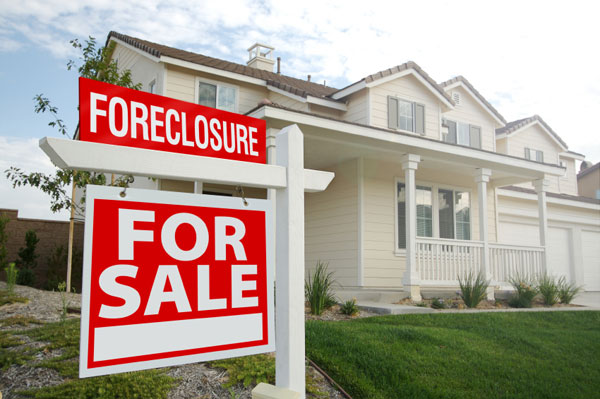Is Hope for Homeowners Hopeless?
A plan designed to help 400,000 homeowners modify their mortgage terms has only helped 25 borrowers.
Jul 31, 20206.9K Shares266.8K Views
It seemed like a good idea at the time. Last October, the Bush administration unveiled a plan aimed at helping homeowners facing foreclosure called Hope For Homeowners. Earlier this month, there was consternation and disbelief across the political and economic spectrum when it was revealedthat the program — initially projected to help up to 400,000 of the most distressed borrowers — had closed exactly 25 loans since its inception.
The logic behind Hope For Homeowners sounded simple enough. It was inspired by a Depression-era entity, the Home Owners’ Loan Corporation, that helped more than a million Americans stay in their homes. Homeowners stuck with ballooning mortgage payments and declining home values could apply for a new, fixed-rate mortgage backed by the Federal Housing Administration. The Department of Housing and Urban Development allocated $29.5 million in start-up costs to cover training and development for the program. To date, a little more than half that amount has actually been spent. What happened?
Illustration by: Matt Mahurin
“Basically, the incentives are wrong for every category of participant,” said Julia Gordon, senior policy counsel at the non-profit Center for Responsible Lending. For starters, it wasn’t cheap to participate. Homeowners had to pay hefty fees and insurance premiums. In addition, a provision designed to discourage house-flipping required homeowners to share, on a sliding scale, between 50 and 100 percent of appreciated equity built up in the home for the first five years. After five years, homeowners would have to turn over 50 percent of that equity, no matter how far into the future they kept the house.
For their part, lenders were required to lower the principle, referred to as “taking a haircut” in industry jargon. Many of these at- or near-default mortgages also had junior liens on them, often in the form of home equity loans. Hope For Homeowners would wipe out those lienholders entirely. Since the plan was wholly voluntary, lenders were under no obligation to take a loss on the loan. As a result, the vast majority took a wait-and-see approach.
The biggest stumbling block, though, was that of securitization. The majority of subprime mortgages were packaged into securities, and the agencies that manage those securities were loathe to enact loan modifications that could lead to lawsuits against them. Technically, a servicing company is free to do what it needs to do to protect investor dollars. However, if the servicer thought taking the HFH “haircut” was the better option while the investor wanted to foreclose and hope for the best, a messy legal battle could ensue, and no one wanted to be the test case.
“What seems to be happening is the servicers are saying ‘I know foreclosure is bad for everybody but my agreement permits it,’ so it’s the default option,” said Alan Mallach, nonresident senior fellow at the Brookings Institution.
Housing policy experts say the program probably wasn’t helped by the decision to put it under the umbrella of the Federal Housing Authority. “The FHA definitely does not move quickly,” said Sharon Price, director of policy for the housing advocacy group National Housing Conference. Marrying HFH to existing FHA programs turned out to be much more complicated than planned, to the extent that the agency ended up having to build the initiative’s infrastructure nearly from scratch.
“What happened was once we got to the details, this program was so different it really forced the FHA folks — who were pretty thinly staffed — to create a whole new infrastructure,” said the Center for Responsible Lending’s Gordon. “It wasn’t as efficient as one might have theoretically surmised.” This alone would have slowed down implementation, but the directive couldn’t have come at a worse time for the FHA.
When the subprime sector took off earlier this decade, the FHA had found itself increasingly on the margins. Formerly the go-to lender for borrowers with tarnished credit histories, the agency found itself competing against behemoths like Countrywide and IndyMac. Its limited menu of fixed-rate loans seemed less attractive to homebuyers than the exotic, interest-only, adjustable or deferred payment plans the private sector offered, and the FHA’s market share slid.
That trend reversed abruptly when the subprime mortgage market imploded. Last year, the FHA suddenly had to juggle a whopping 161.2 percent increase in applications over 2007. “If Hope For Homeowners actually took off, they’d be swamped,” said Alan Mallach.
Last week, House Financial Services Committee chair Rep. Barney Frank (D-Mass.) pledged to figure out what went wrong, and a series of tweaks to the program has been green-lighted by the financial committee and awaits full House approval. This piece of on-deck legislation dials back the required premiums and equity-sharing measures, and decreases the loss-taking required of lenders. Another provision gives legal immunity to loan servicers who modify loans.
Some say it’s not enough. American Enterprise Institute resident fellow Alex Pollock suggests taking HFH out of the FHA and creating a separate entity. “What they did in the 30s and what I would have preferred would have been a stand-alone entity.” Pollock said. “You’d have had a much more energetic program with a higher probability of success if it was set up as a thing in and of itself.”
Alan Mallach takes it a step further, suggesting that this new division could be responsible for all of the mortgage-related programs, infusions and investments the government has become involved — some would say entangled — in over the past several months. “What we need is a single mechanism for whenever the government finds itself controlling a mortgage,” he said.
Both agree that such a plan is politically unpalatable, though, because it requires at the outset an implicit acknowledgement that the current mortgage problems are going to be with us for a long time to come. Even for a government that has gobbled up substantial amounts of soured assets, that admission might be too much to swallow.
Martha C. White is a freelance journalist in New York. She regularly writes about finance and the economy.

Paula M. Graham
Reviewer
Latest Articles
Popular Articles

